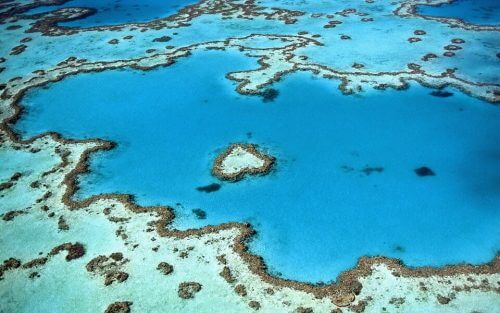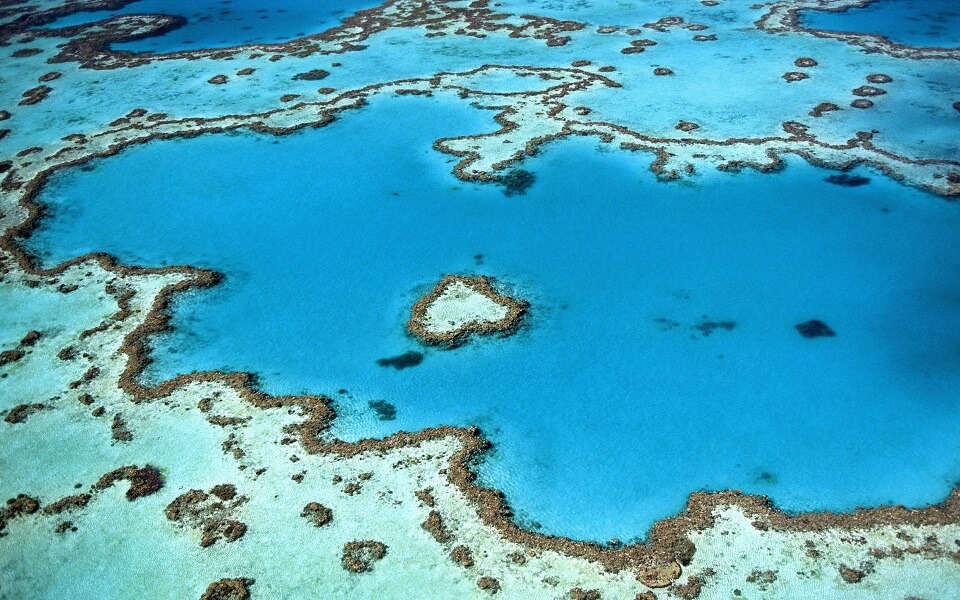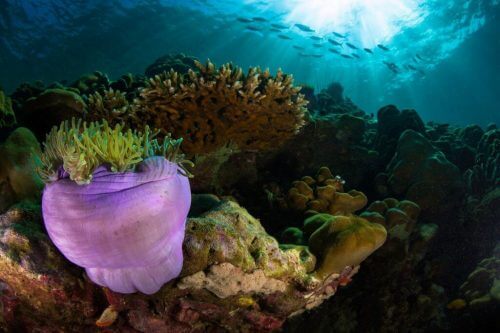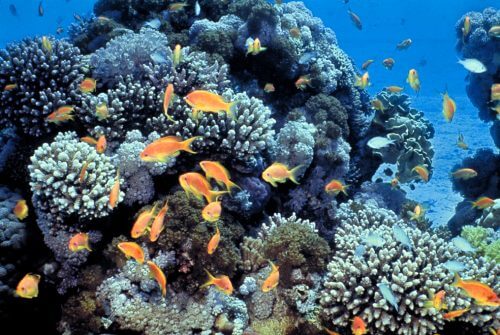A new study, which examined the state of coral reefs since 1980, paints a very bleak picture: coral bleaching events are occurring with increasing frequency and, unlike in the past, the reefs are finding it difficult to recover from them. Is it already too late to change the fate of the corals, and perhaps the solution lies in the Gulf of Eilat?

By Ran Ben Michael, Angle, Science and Environment News Agency
Coral reefs, anywhere in the world, are perhaps the most spectacular sight in the marine landscape: the wealth of species, the variety of colors, and the ceaseless activity of life in them are familiar to every beginner nature lover or just to anyone who enters the water with a snorkel in Eilat. The reefs are probably the iconic habitat of the ecosystems in the sea - but now we have to ask ourselves how much longer we can enjoy this unique beauty.
A study by an international team of scientists, published at the beginning of the month in the prestigious journal Science, reviews in the most systematic way to date - based on studies, media coverage, reports from government agencies and direct observations - the coral bleaching events in a hundred reefs around the world since 1980.
The research findings paint a very bleak picture.
The corals are starving
Corals are animals that live in association (symbiosis) with tiny unicellular algae (zooxanthellae); The algae provide the corals with a lot of energy by transferring the sugars they produce in the process of photosynthesis to the coral, which make up a significant part of the coral's food, while the corals provide the algae with carbon dioxide and other nutrients (waste from the coral's metabolism) and protection from predators within the coral tissue protected by stinging cells and a calcareous skeleton . The energy of the algae allows the corals to build their calcareous skeleton which is built at a slow pace and is responsible for the formation of this unique and diverse habitat.
As a complex ecosystem, the threats to coral reefs as a result of human activity are many - physical destruction as a result of the establishment of coastal and marine infrastructure, covering the reefs with sediment as a result of increased soil erosion and fishing with dynamite, pollution and atara (enrichment of the marine environment with nutrients), or overfishing (especially of species vegetarian fish that feed on multicellular algae that compete with corals) - all have the potential to damage the reef.
However, the most serious threat to coral reefs today is climate change. The reefs are particularly sensitive to an increase in seawater temperature, so an increase of about one degree Celsius above the average maximum temperature that prevails in the same area and that lasts for several weeks is enough to lead to the bleaching of the corals. Coral bleaching occurs when the cooperative algae leave the coral tissue. Because the algae also provide the corals with their eye-catching colors, after the algae leave the coral tissue appears transparent and the white calcareous skeleton is revealed through it - that's why these events are called bleaching events. In addition, since the algae provide the corals with about 90 percent of their energy consumption, after the coral bleaching, some of the coral species are unable to obtain enough food through their hunting arms, and if the bleaching continues, those corals die and the rich ecosystem that relies on them may collapse.

Similar to the human body's exposure to disease and infection, reefs can recover from short, infrequent bleaching events when those corals that survived the bleaching reacquire cooperative algae from the seawater. However, from bleaching events that last a long time and are very frequent, the reefs have difficulty recovering.
Before the eighties of the last century, coral bleaching events were something uncommon, limited in scope and usually associated with the El Niño event - a climatic phenomenon that occurs every five years and includes a change in the pattern of sea currents and an increase in water temperature; The researchers point out that today bleaching has a direct connection to climate change. Global warming not only raises the water temperature regularly, but also increases the chance of extreme weather events and extends the impact of events such as El Niño, so that corals both cook slowly in sustained heat and survive in sudden high heat.
A serious event every six years
Coral reefs are a diverse habitat comparable in species richness to tropical rainforests. Although reefs occupy only about 0.1 percent of the surface of the ocean floor, about 25 percent of the marine species known to us spend at least part of their life cycle on them, for reproduction, spawning, development of offspring or searching for food. Reefs around the world provide a great economic benefit to humans, as a source of fish, as a barrier to the subsidence of waves or drift, as a source of natural materials used for the development of medicines, and of course as very attractive sites for tourism, recreation, sports and leisure.
According to the new study, in recent years a seawater warming event has occurred on average every six years leading to severe bleaching - of at least 30 percent of the coral cover on the reef - compared to once every 25 to 30 years as in the past. The problem is that even the fastest growing reefs need about 10 to 15 years to recover and this short time window does not allow for that. According to the study, in 1980 the chance of any bleaching event was only 8 percent - a figure that jumped to 31 percent in 2016.
In the years 2016-2015, bleaching events were observed in about 75 percent of the surveyed reefs. Thus, for example, on a reef in the island nation of Kiribati in the South Pacific Ocean, water warming that lasted for ten months in these years led to the bleaching of about 90 percent (!) of the coral cover. Half of the reefs of the western Atlantic and Caribbean have undergone a bleaching event at least seven times since 1980.
In the Great Barrier Reef of Eastern Australia, probably the most well-known reef in the world, the change is evident in all its severity. In 1998, a serious bleaching incident was recorded there for the first time and again in 2002. In 2016 and 2107, bleaching events were already recorded in subsequent years. From being a rare event, large-scale coral bleaching has become a recurring event. Moreover, the second bleaching event of the Great Barrier Reef occurred when the opposite phenomenon to El Niño - La Niña, which is characterized by colder sea water temperatures - had already begun, which demonstrates the combined action of climate factors.
אז מה עושים?

The researchers estimate that intensive activity in the next two decades can lead to change. Although, in the long term only activity to mitigate global warming through a global reduction of greenhouse gas emissions can help, especially if the effort is invested in the direction of the ambitious goal of limiting the rise to 1.5 degrees as stipulated in the Paris Agreement. In the short term, the effects of other pressures must be reduced - such as the pollution caused by the discharge of urban industrial sewage and agricultural fertilizers into the marine environment, leading to blooms of unicellular and multicellular algae that cloud the seawater, block the light and cover the corals - this is to increase the resilience of the coral colonies for bleaching events. In addition, using innovative means of ecological restoration, such as breeding nuclei of corals in protected nurseries to return them to nature, seeding corals, or cultivating species that are more resistant to the high temperatures, could also help stabilize the reefs. Researchers have even proposed more radical solutions such as the injection of cold water, enrichment with materials that moderate the effects of temperature and acidification, and even large-scale shading over parts of the reef.
It is possible that one of the keys to progress lies in the Gulf of Eilat. According to research by Israeli marine scientists, the corals from the coral reefs in Eilat are more resistant to changes due to the evolutionary process they have undergone. In the study it was found that despite an experiment that exposed one of the reef coral species in Eilat to conditions of heat and acidity significantly higher than the conditions prevailing in the Gulf of Eilat, the corals continued to function and maintain the interrelationship with the algae. However, even if these corals have a genetic load that enables their survival in the first stages of climate change, in later stages towards the end of the 21st century this may not be enough. The researchers warn that the reefs in Eilat are still threatened by pollution of the sea and the accelerated development around the bay, when it was only recently announced about the intention to establish An underwater hotel in the waters of the Gulf of Eilat Not far from the thriving reefs of the Palm Beach andKatsa beach just opened to the public.
See more on the subject on the science website:
